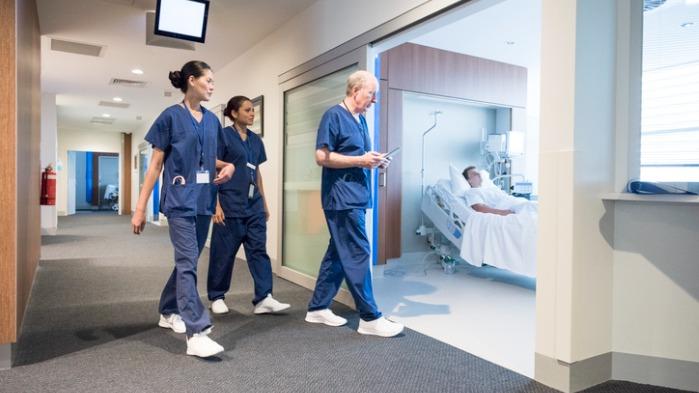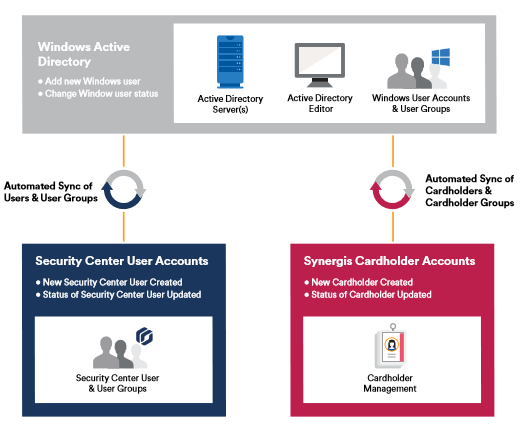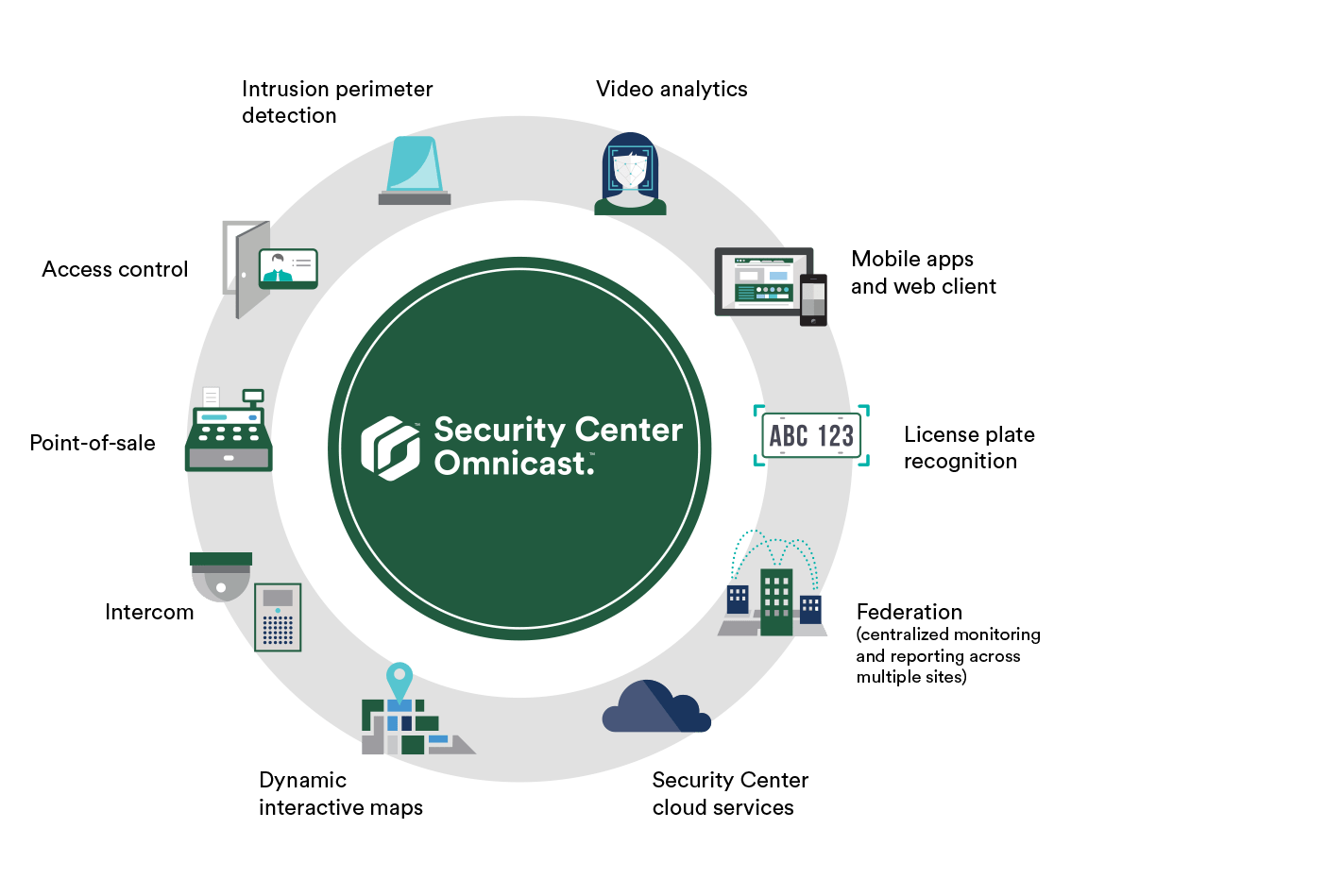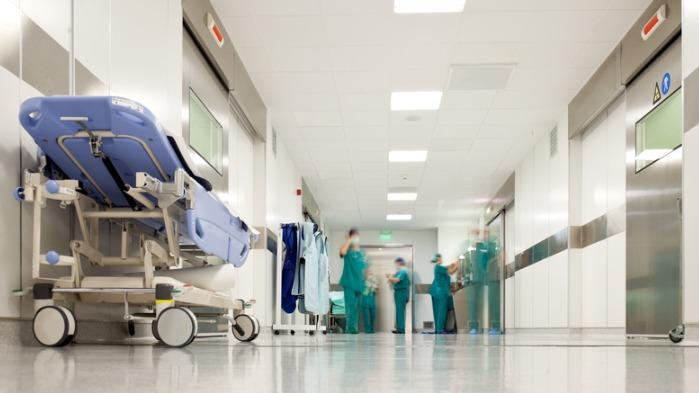Healthcare
Video Surveillance & Security Systems for Healthcare Facilities
Running a healthcare facility means complying with legislation & regulations that ensure the safety and privacy of patients, staff, and sensitive medical information. While requirements vary based on the facility’s size (e.g. public & private hospitals, local health districts, and medical centres), its location, and the medical services it provides, there are specific security systems that should be in place that can be customised specifically for healthcare.
JD Security provides video surveillance and security solutions for hospitals and medical centres to protect patients and safeguard the resources needed to ensure good patient outcomes.
Our Healthcare portfolio includes solutions for safety & security, patient care and hospital operations and services.
Access Control for Healthcare
Access Control Systems restrict entry to authorised personnel, help manage visitor access, safeguard medical dispensaries and personal protective equipment and can be used in an emergency evacuation to ensure that staff reach their designated mustering points.
A typical Access Control System for a healthcare facility includes:
- Card Readers: are used to read access credentials. These credentials can include smart cards, proximity cards, key fobs, or credentials on a mobile device.
- Credentials: are physical cards, fobs or virtual tokens issued to individuals to authenticate access. They can include mobile credentials, smart cards, proximity cards, key fobs or biometric identifiers such as fingerprints or iris scans. Card readers verify presented credentials.
- Locks & Door Hardware: Access Control Systems allow for remote unlocking or locking doors using electric locks, magnetic locks, or electrified door strikes.
- Controllers: controllers are the system’s central processing unit, managing authentication, authorisation, and communication with other components.
- Access Control Software: Access control software serves as the interface and management platform for the access control system, enabling administrators to set access rules, oversee users and credentials, monitor access events in real-time, generate reports, and handle system administration tasks.
- Management Server: the management server acts as the central hub for the access control system, hosting the software, facilitating communication among system components, storing user data, and managing system-wide configurations.
- Network Infrastructure: an access control system relies on a network infrastructure to connect all the components. This includes Ethernet cables, switches, routers, and other networking equipment that enable data communication between the access control panels, card readers, and management servers.
- Integration Modules: integration modules, which are software-based APIs, enable the access control system to integrate seamlessly with other security systems like video surveillance, intrusion detection, and intercoms. These modules facilitate synchronised responses and create a unified security management platform.
- Power: Power supplies, backup power sources, and surge protection devices ensure the system remains operational during power outages or fluctuations.
- Process automation add-on modules: Access control software developers also create add-on tools and applications to manage and automate processes, including visitor management, evacuation assistance, emergency lockdown, threat management, interactive mapping, visitor escorts, and multi-factor authentication.
Genetec Security Center for Healthcare Facilities
Genetec Security Center offers robust credential management specifically tailored to the needs of healthcare environments. Here’s how Security Center can manage access control credentials in a healthcare facility:
- Healthcare-Specific credentials: supports healthcare-specific access control credentials, such as healthcare ID badges or employee badges with embedded RFID technology. These credentials can store additional information, such as staff roles, clearances, or medical certifications, enabling more granular permissions.
- Role-Based credential assignment: allows administrators to assign credentials based on user roles within the healthcare facility. Different staff roles can be associated with specific access rights and permissions, ensuring appropriate access control based on job responsibilities.
- Integration with identity management systems: Security Center seamlessly integrates with identity management systems, including Active Directory, centralising the management and synchronisation of Windows user accounts with Security Center’s administrator and cardholder accounts,, Azure Active Directory and LDAP-compliant identity management systems.
- Visitor management: enable efficient visitor management by issuing temporary access credentials, such as visitor badges or temporary access codes. Visitor registration, screening, and tracking can be streamlined to enhance security and visitor experience.
- Credential lifecycle management: provides comprehensive lifecycle management for credentials, including enrollment, issuance, renewal, expiration and revocation.
- Access rules & permissions: allow administrators to define access rules and permissions specific to healthcare environments. Access can be granted or denied based on time, location, user roles, or particular events. This ensures that access is granted only to authorised personnel and areas as required for patient privacy and safety.
- Mobile credentials: supports mobile credentials, enabling staff to use mobiles or wearable devices, enhancing infection control measures by reducing the need for physical contact with shared surfaces.
- Reporting & auditing:
- Integration with other systems: integration with video surveillance systems allows for the correlation of access control events with corresponding video footage. This enhances situational awareness, facilitates investigations, and provides a more comprehensive security management platform.
By leveraging Genetec Security Center’s tailored features for healthcare facilities, administrators can effectively manage access control credentials, ensuring the right level of access for staff members and visitors while maintaining patient privacy, safety, and compliance with industry regulations.
Inner Range Integriti for Healthcare
Facing serious risks such unauthorised entry and assaults against staff, Healthcare facilities require a security system that can ensure the safety of its patients and staff whilst also providing the public with the access required to effectively deliver its services.
- Access Control for the safety of patients & staff – Integriti’s Access Control features ensure that only authorised stakeholders are permitted in restricted areas. Additionally, staff can have access to restricted areas only during time periods where they have a valid reason to enter secured spaces. Access to valuable or dangerous assets such as Medical Equipment and Pharmecutical Drugs can be tightly controlled with full access reports available to record detailed information regarding the entry into these controlled areas.
- CCTV integration – with Integriti can provide control rooms with immediate access to live and recorded video associated with a Duress Alarm, displayed on a schematic map which shows the exact location of the incident for fast response. Integriti integrates with leading VMSs including Genetec Security Center, Genetec Omnicast, AXIS Camera Station, Avigilon.
- Duress alarms – can be raised from fixed or mobile duress buttons. When a duress alarm is raised, guards, staff and other stake holders can be immediately notified via Integriti’s messaging application – Communicator which will broadcast text and emails.
- Managing a complex array of building & health subsystems – Large Hospitals and healthcare facilities consist of dozens of intelligent building systems that need to integrate and operate harmoniously in order for the facility to function in a safe and efficient manner. Inner Range’s integriti platform supports full integration with a host of systems relevant to a healthcare environment such as Patient Management systems , Nurse Call systems , Management systems and Patient Management systems.
- Contractor Management – Large Healthcare facilities require the services of hundreds of independent contractors who require access to the premises. In addition to its native functionality integriti also seamless integrates with dedicated Contractor Management Systems. These systems ensure contractors are provided temporary access credentials, and have complied with onsite Health and safety inductions. In addition, Contractor invoices can be reconciled with the actual time that contractors spend on site.
Genetec Omnicast for Healthcare Facilities
Genetec Omnicast an IP-based VMS, empowers you to work smarter with video. You can respond quicker and make informed decisions by having a clear picture of events. Its efficient streaming and flexible architecture reduce storage requirements and lighten network load. Furthermore, it seamlessly scales up, incorporates the latest cameras and analytics, and unlocks operational insights. Omnicast is a component of the Genetec™ Security Center platform, enabling the easy integration of video with access control, intrusion detection, communications, and other systems.
- Centralised Camera Management: for managing IP cameras across locations including public entrances, hallways, waiting areas and car parks. It offers a unified interface where security personnel can monitor and control video feeds from multiple cameras, ensuring comprehensive coverage and efficient management.
- Maternity Wards: cameras are used to extensively monitor newborns, with the primary objective of demonstrating a transparent chain of custody and evidence of the care provided to every infant.
- Dispensaries: cameras in narcotics and medicine storage areas serve the purpose of validating appropriate access and reducing the possibility of drug theft.
- Emergency Departments: operate as around-the-clock care facilities. Ensuring comprehensive coverage is critical to safeguard the welfare of patients, staff, and visitors. Whether dealing with individuals seeking drugs or patients undergoing mental health emergencies, maintaining superior performance and camera saturation is of utmost importance.
- Live monitoring: enables real-time monitoring of live video feeds from cameras deployed throughout the healthcare facility. Security personnel can actively monitor critical areas, such as emergency rooms, operating theaters, or restricted zones, to ensure patient safety, prevent unauthorized access, and respond promptly to security incidents.
- Event-Based recording: supports event-driven recording, allowing cameras to automatically start recording when specific events occur. These events can include motion detection, alarms from access control systems, or other triggers. Event-based recording ensures that crucial incidents or activities are captured and recorded for future reference or investigation.
- Privacy protection: provides privacy masking functionality, which allows sensitive areas, such as patient beds, consultation rooms, or medication storage areas, to be excluded from video surveillance. This ensures compliance with patient privacy regulations, maintaining the confidentiality of healthcare interactions.
- Integration with Access Control: seamlessly integrates with access control systems for synchronised video and access control events, providing visual verification of access control events and enhancing overall security measures.
- Alarm and event management: integrates with dedicated security system devices including panic alarms, or fire alarm panels. When an alarm or event is triggered, Omnicast can display relevant video feeds in real-time, aiding security personnel to make quick assessments and take appropriate action.
- Video analytics: supports video analytics technologies specifically tailored for healthcare requirements including people counting, object detection, facial recognition, and fall detection, actively identify security threats, monitor crowd flow, detect unauthorized access, and offer insights into operational efficiency. With this support, hospitals can effectively monitor areas with restricted access, ensuring the safety of areas where doctors work. Furthermore, it plays a crucial role in safeguarding the hospital’s valuable assets, such as wheelchairs, crutches, medical equipment, and medication, which carry a high replacement cost if stolen.
- Mobile access: offers a mobile app that enables authorised personnel, such as security staff or administrators, to access live and recorded video feeds remotely using a mobile device. This allows for on-the-go monitoring and quick response to security incidents, even when personnel are not physically present in the control room.
- Compliance and evidence management: comply with regulatory standards with robust evidence management capabilities. It securely stores, retrieves, and shares video evidence in a tamper-proof manner, guaranteeing the integrity of evidence for legal or compliance purposes.
- Scalability and future-proofing: Omnicast is highly scalable and can accommodate the evolving needs of a healthcare facility. It supports the integration of the latest camera technologies, video analytics, and hardware solutions, ensuring that the video surveillance system can adapt to future requirements and technological advancements.
Our range of camera technology for healthcare facilities includes:
- AXIS P14 bullet camera series
- AXIS P32 dome camera series
- AXIS P56 PTZ camera series
- AXIS Q16 box camera series
- Multidirectional, Multidirectional PTZ, Multisensor & Single-Sensor AXIS cameras
By leveraging the capabilities of Genetec Omnicast, healthcare facilities can effectively manage video surveillance, enhance security and safety protocols, and streamline operations for improved patient care and staff well-being.
According to state & territory poisons and controlled substances regulations, high-security access control is required for the storage of poisons and controlled substances. These security measures are designed to prevent unauthorized access, theft, and misuse of these substances.
- Perimeter Security: Secure the facility’s perimeter with fencing, gates, and appropriate barriers to prevent unauthorized access.
- Visitor Management: Implement visitor registration procedures, identification checks, and visitor badges to monitor and control access for visitors.
- CCTV Surveillance: CCTV cameras must be insalled throughout the facility, including entrances, hallways, and critical areas, to monitor and record activities. A Video Management System (VMS) is an esssential requirement for searching video for people, vehicles and events.
Hospital pharmacies can be vulnerable to theft – in these cases, not only can analytics determine if someone is loitering in the vicinity, it can also count the number of people permitted inside the pharmacy at any given time. For example, if a maximum of 2 people should be in a pharmacy, a people counting analytic can trigger an alert if a third person enters. If there are periods when it’s closed (e.g. lunchtime) then analytics can trigger an alert if anyone enters the pharmacy at all.
Similarly, hospital laboratories have restricted access so that tests can take place in an uncontaminated and safe environment. They also contain a lot of very valuable equipment and substances that medical professionals use to carry out tests. As with the pharmacy example above, video analytics can assess if people are loitering around the lab, and whether the appropriate number of people has been exceeded at any given time.
Environmental Monitoring
- Air Quality Monitoring: ensure proper ventilation in each room and see average air quality at a glance. Connect Halo devices to Genetec Security Center to combine air quality alerts with live video.
- Chemical & Gas Detection: detect chemical spills and hazardous gases in mechanical or utility rooms, custodial closets, and maintenance areas.
- Disease Prevention: Ensure your residents and staff are safe from airborne diseases, prevent the spread of infectious disease, ensure rooms have been cleaned, and the air is properly filtered.
How does the Halo IoT Sensor air quality index work?
The Halo IoT Smart Sensor is designed to monitor and provide information about environmental factors, including air quality. The device uses advanced sensors to measure specific parameters related to air quality and calculates an Air Quality Index (AQI) based on the collected data. Here’s how the Halo IoT Smart Sensor’s air quality monitoring works:
- Sensor Array: The Halo IoT Smart Sensor is equipped with a sensor array that includes sensors for detecting volatile organic compounds (VOCs), carbon dioxide (CO2), temperature, humidity, and other relevant factors. These sensors are strategically placed to capture accurate readings of the surrounding air.
- Data Collection: The sensor array continuously gathers data from the environment, measuring the concentrations of different gases and substances present in the air. The collected data is processed by the device’s internal algorithms.
- Air Quality Index Calculation: Using the collected data, the Halo IoT Smart Sensor calculates an Air Quality Index (AQI) value. The AQI is a numerical value that represents the overall air quality level, providing an indication of how clean or polluted the air is in the monitored area.
- Display & Notifications: The calculated AQI value is displayed on the device itself, usually through an LED indicator or a digital display. The Halo IoT Smart Sensor can be connected to the Halo Cloud or a VMS like Genetec Security Center, allowing users to access AQI readings remotely. Notifications or alerts can be set up to inform users when the air quality exceeds certain thresholds or when specific conditions are detected.
- Data Analysis & Reporting: The Halo IoT Smart Sensor stores & analyses collected data. This enables users to gain insights into air quality trends, identify patterns, and make informed decisions regarding environmental improvements or interventions.
Staff Training and Awareness
- Security Policies and Procedures: Develop and communicate clear security policies and procedures to staff members. This includes guidelines for protecting patient information, reporting security incidents, and maintaining a secure environment.
- Training: Provide regular training sessions for staff to raise awareness about security protocols, emergency response procedures, and patient privacy. This can help staff members identify and respond to security threats effectively.
Emergency Preparedness
- Emergency Response Plan: Develop an emergency response plan that outlines procedures for different types of emergencies, including natural disasters, fires, medical emergencies, or security incidents. Conduct regular drills and train staff on their roles and responsibilities during emergencies. The emergency evacuation tool in Genetec Security Center helps ….
- Alarm Systems: Install appropriate alarm systems, including fire alarms, panic alarms, and duress alarms, to alert staff and trigger necessary responses during emergencies.
- Collaboration with Authorities: Establish relationships and protocols for collaboration with local law enforcement, emergency services, and relevant authorities to enhance emergency preparedness and response.
Incident Reporting and Investigation
- Incident Reporting: Implement a system for reporting and documenting security incidents, breaches, or near misses. Encourage staff to report any suspicious activities or security concerns promptly.
- Investigation and Response: Establish protocols for investigating security incidents and breaches. This includes conducting internal investigations, documenting findings, and implementing corrective measures to prevent recurrence.
Our range of recommended security technology for healthcare facilities includes:
- Multidirectional, Multidirectional PTZ, Multisensor & Single-Sensor AXIS cameras
- AXIS P14, AXIS P32, AXIS P56 & AXIS Q16
It’s important to note that healthcare facilities should also consider additional security measures specific to their operations, such as medication management, equipment security, and infection control protocols. Compliance with relevant Australian health regulations and accreditation standards, such as those set by the Australian Health Practitioner Regulation Agency (AHPRA) and the Australian Commission on Safety and Quality in Health Care, is crucial in maintaining a secure healthcare facility.
Our Awards
JD Security’s expertise has been widely recognised, leading to numerous awards, including:
- AXIS Partner of the Year for Retail Multi-site Solutions 2019-2020
- AXIS Partner of the Year for Retail Multi-site Solutions 2021-2022
- AXIS Partner of the Year 2021-2022 NSW & ACT
- AXIS Partner of the Year Oceania End-to-End Solutions Champion
- Genetec Unified System Sales Award at Genetec Elevate 22
Our project managers, project engineers, and system integration teams have played an instrumental role in securing these awards, with their commitment to quality setting a high standard for the industry.
Support Services
We also provide:
- Concept 4000 to Integriti migration
- Software licensing including Integriti Corporate, Business, Professional & Express editions, and Genetec & AXIS Camera Station licenses
- Apps including Integriti Mobile, AXIS Companion, Genetec Mobile and more.
- Onsite & Remote Technical Support
- Grade A1 Security & Video Monitoring
Contact Us
Call us on 1300 556 334 or email [email protected] to learn more.
Customers in New Zealand call 0800 345 677 or email [email protected].




